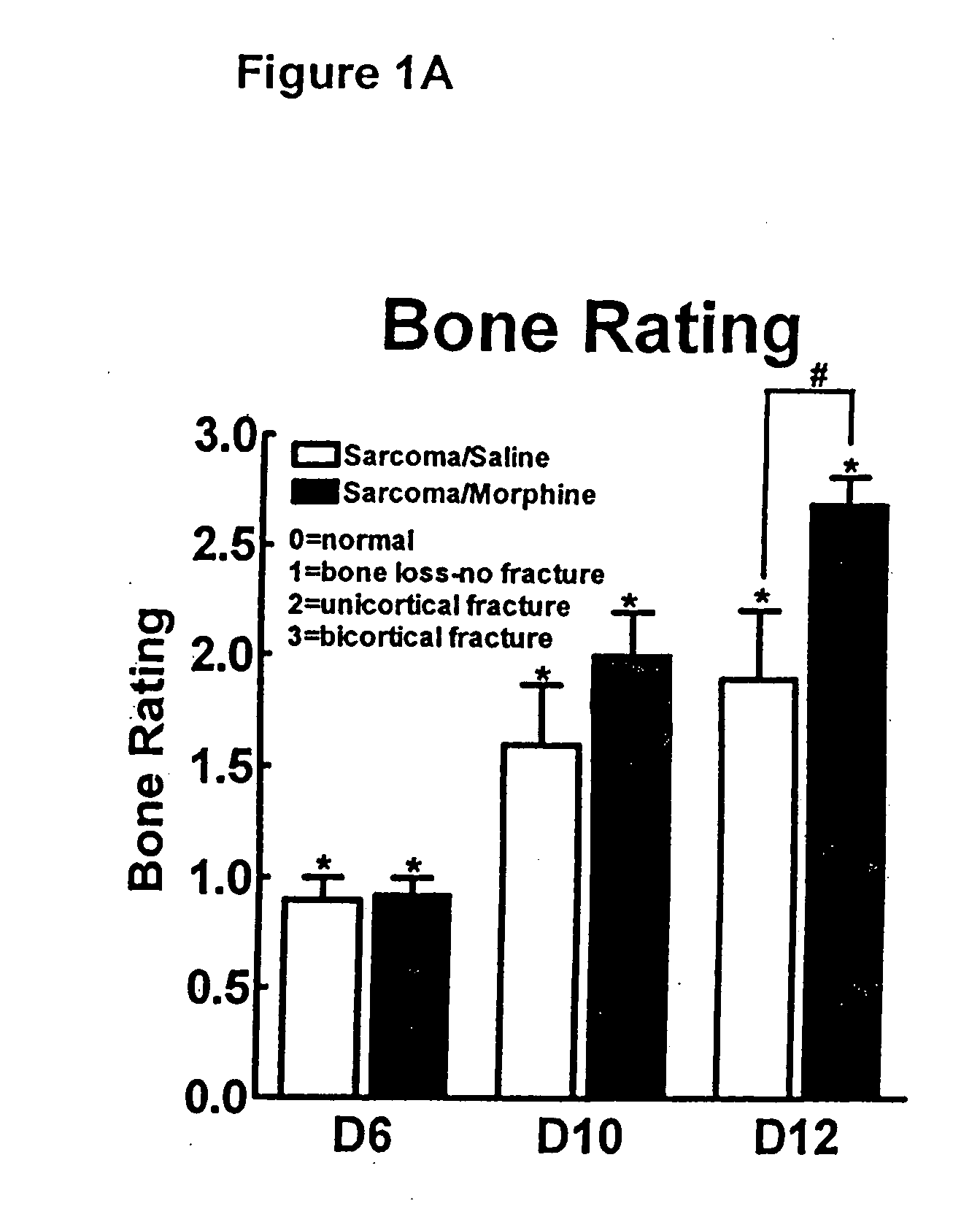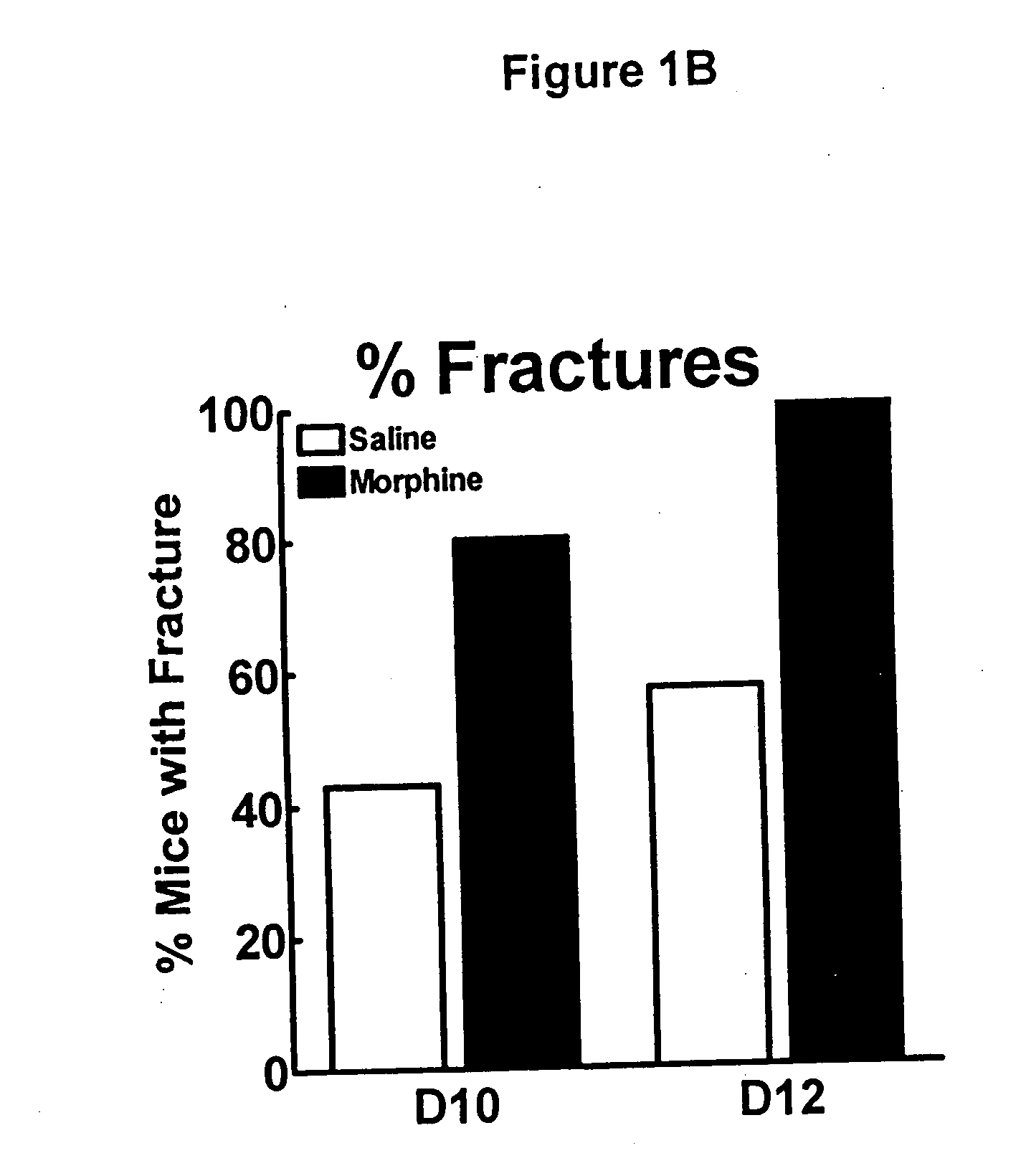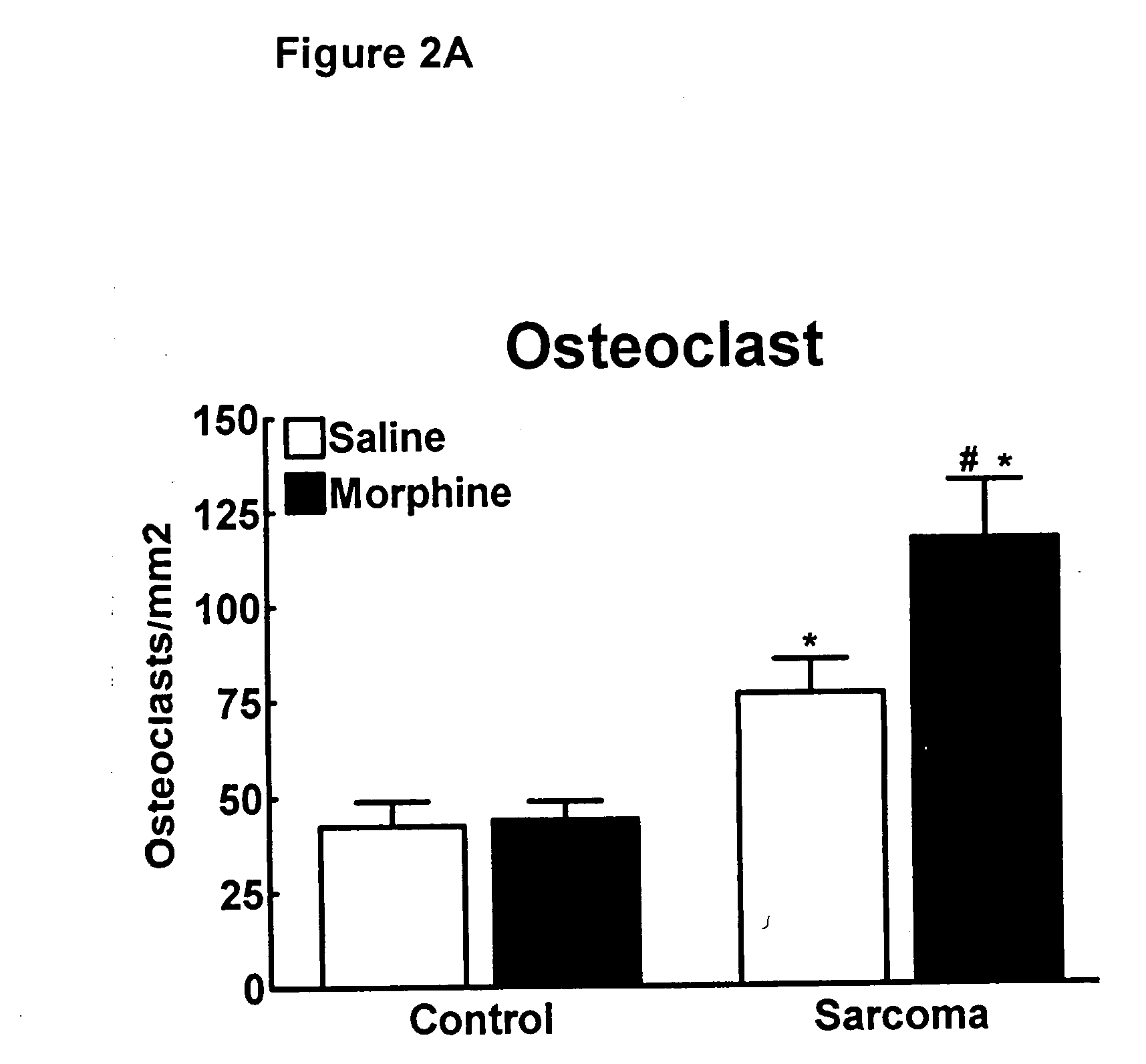Compositions and methods in the treatment of bone metabolic disorders
a metabolic disorder and composition technology, applied in the field of compositions and methods in the treatment of bone metabolic disorders, can solve the problems of habit or addiction, undesirable side effects such as physical dependence and drug craving, and the molecular mechanisms leading to addiction have remained elusive, so as to reduce drug use or drug dependency, prevent abuse of opiate, and block undesirable peripheral effects
- Summary
- Abstract
- Description
- Claims
- Application Information
AI Technical Summary
Benefits of technology
Problems solved by technology
Method used
Image
Examples
example 1 sustained
Morphine Accelerates Sarcoma-Induced Bone Loss and Fracture
[0131] To determine the effects of sustained morphine exposure on sarcoma-induced bone loss, radiographic images were taken following behavioral testing. Radiographs of bones 12 days following femoral injection of sarcoma or control medium 15 days into morphine or saline infusion show that sustained morphine administration increased sarcoma-induced bone loss. In the sarcoma treated mice with saline infusion, bone loss was observed in the distal head of the bone and extended along the femur to the proximal head. Radiographs were rated according to a 3 point scale by an experimenter blinded to the experimental condition of the femur. Ratings of sarcoma treated mice with saline or morphine infusions 6, 10, and 12 days following sarcoma injection show that some sarcoma-induced bone loss is observed 6 days following, with no difference between morphine or saline treated mice. Unicortical fractures begin to develop 10 days followi...
example 2
[0132] Previous studies have shown that osteolytic cancers, such as the sarcoma cell line used in these studies, upregulate osteoclasts within the bone. To determine whether the enhanced morphine-induced bone loss is mediated through further upregulation of osteoclasts, osteoclasts were stained and counted within the metaphysis of the distal head of the femur using tartrate resistant acid phosphatase (TRAP) staining. Osteoclast staining was significantly increased in sarcoma treated animals compared to control animals (*p>0.05); FIG. 2A). There was no difference in osteoclast staining in control animals treated with morphine as compared to those treated with saline, suggesting that sustained morphine itself did not alter osteoclastogenesis. However, sustained morphine infusion increased sarcoma-induced upregulation of osteoclasts compared to saline infusion, suggesting that sustained morphine increases sarcoma-induced upregulation of osteoclastogenesis (*p<0.05; FIG. 2B).
PUM
| Property | Measurement | Unit |
|---|---|---|
| Time | aaaaa | aaaaa |
| Composition | aaaaa | aaaaa |
| Biocompatibility | aaaaa | aaaaa |
Abstract
Description
Claims
Application Information
 Login to View More
Login to View More - R&D
- Intellectual Property
- Life Sciences
- Materials
- Tech Scout
- Unparalleled Data Quality
- Higher Quality Content
- 60% Fewer Hallucinations
Browse by: Latest US Patents, China's latest patents, Technical Efficacy Thesaurus, Application Domain, Technology Topic, Popular Technical Reports.
© 2025 PatSnap. All rights reserved.Legal|Privacy policy|Modern Slavery Act Transparency Statement|Sitemap|About US| Contact US: help@patsnap.com



